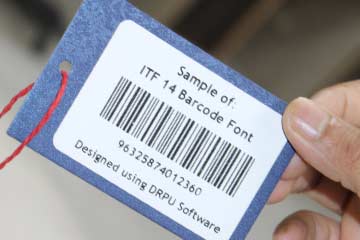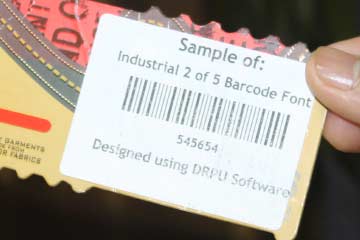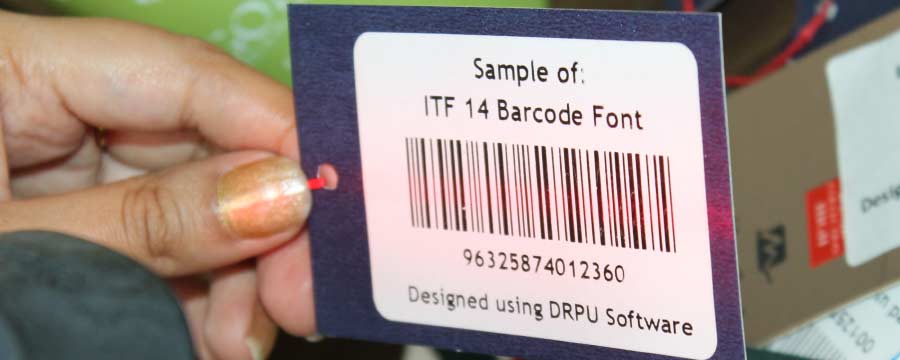Difference Between ITF-14 Barcode and Other Barcodes
ITF-14 barcode, also known as the Interleaved 2 of 5 (ITF) barcode, is different from other barcode types in several ways. In this section, we will discuss the differences between ITF-14 barcode and other barcode types.


-
Structure:
One of the primary differences between ITF-14 barcode and other barcode types is its structure. The ITF-14 barcode consists of a 14-digit number that is encoded in a series of black and white bars. The bars are arranged in two interleaved rows, with each row representing a group of five digits. The bars in each row are of different widths, with the narrow bars representing zeros and the wider bars representing ones. In contrast, other barcode types, such as UPC and EAN barcodes, consist of a 12 or 13-digit number encoded in a series of bars of different widths.
-
Usage:
ITF-14 barcode is primarily used to label and track products and assets in the supply chain, while other barcode types have more specific applications. For example, UPC barcodes are commonly used in the retail industry to label and track consumer products, while EAN barcodes are used in Europe and other countries outside of North America.
-
Print Quality:
The ITF-14 barcode requires high print quality to be accurately read by a barcode scanner. This means that it must be printed using high-quality printing equipment, such as a thermal transfer printer or a high-quality label stock. Other barcode types, such as UPC and EAN barcode, can be printed using lower quality equipment and label stock.
-
Readability:
The ITF-14 barcode is designed to be read using a barcode scanner that is capable of reading 2D barcodes. This makes it more reliable and efficient than other barcode types, which may require special scanners or additional equipment to read. The ITF-14 barcode is also capable of storing more information than other barcode types, making it more versatile and useful in various applications.
-
Length:
The ITF-14 barcode is longer than various other barcode types, which allows it to store more extra information. This makes it useful for applications where additional information, such as batch or lot numbers, is required. In contrast, other barcode types, such as the UPC and EAN barcodes, have a fixed length and cannot store additional information beyond the basic product identifier.
-
Validation:
The ITF-14 barcode includes a check digit, which is used to validate the accuracy of the barcode. This ensures that the barcode is correctly encoded and can be accurately read by a barcode scanner. Other barcode types, such as the UPC and EAN barcodes, also include a check digit, but the validation process is different.
Characters Encoded in ITF-14 Barcode
➤The ITF-14 barcode, also known as the Interleaved 2 of 5 barcode, is a type of linear barcode that is widely used in the packaging and shipping industries. The ITF-14 barcode is used to encode a 14-digit Global Trade Item Number (GTIN) and is capable of encoding additional information such as batch numbers and expiry dates. In this section, we will discuss the characters that can be encoded in an ITF-14 barcode.

➤The ITF-14 barcode uses two interleaved rows of bars and spaces to encode the data. Each digit is represented by five bars and five spaces, with each bar and space being either wide or narrow. The encoding scheme used in the ITF-14 barcode is based on the Interleaved 2 of 5 (I2of5) code, which is a numeric-only barcode that can encode any combination of digits from 0 to 9.
The ITF-14 barcode can encode the following characters:
-
Numeric Digits: The ITF-14 barcode can encode any combination of the digits 0 to 9. The 14-digit GTIN is a required component of the ITF-14 barcode and must be encoded using numeric digits.
-
Serial Numbers: The ITF-14 barcode can encode serial numbers, which are unique identifiers assigned to individual products. Serial numbers can be encoded using the letters A to Z and the digits 0 to 9.
-
Check Digit: The ITF-14 barcode includes a check digit that is used to verify the accuracy of the GTIN. The check digit is calculated using the Modulo 10 algorithm, which involves summing the products of each digit in the GTIN with alternating weights of 3 and 1, and then subtracting the result from the nearest higher multiple of 10.
-
Batch Numbers: The ITF-14 barcode can encode batch numbers, which are alphanumeric codes that identify a specific production batch of a product. Batch numbers can be encoded using the letters A to Z and the digits 0 to 9.
-
Leading Zero: The ITF-14 barcode requires a leading zero to be added to the 14-digit GTIN. The leading zero is used to distinguish the ITF-14 barcode from other barcodes that may use the same barcode symbology.
-
Expiry Dates: The ITF-14 barcode can encode expiry dates, which are dates after which a product should not be used or consumed. Expiry dates can be encoded in the format YYMMDD, where YY represents the year, MM represents the month, and DD represents the day.
It is important to note that the ITF-14 barcode is a numeric-only barcode and cannot encode letters, symbols, or other special characters. If there is a need to encode non-numeric data, a different barcode symbology, such as Code 128 or QR code, should be used.
In summary, the ITF-14 barcode can encode numeric digits, a leading zero, a check digit, batch numbers, expiry dates, and serial numbers. The encoding scheme used in the ITF-14 barcode is based on the Interleaved 2 of 5 (I2of5) code, which is a numeric-only barcode that can encode any combination of digits from 0 to 9.